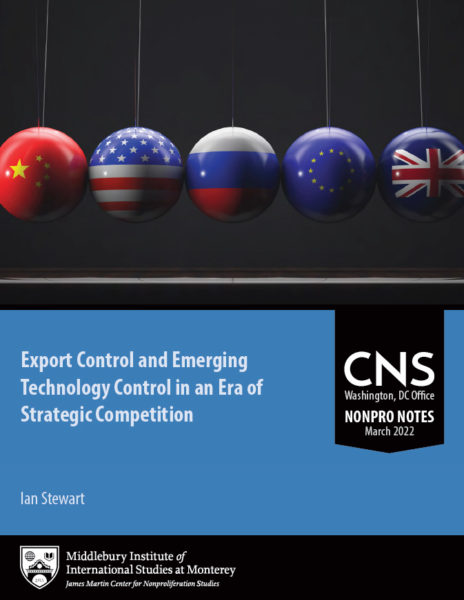Reproduced from nonproliferation.org
Context
CNS has been focused both on the question of emerging technology controls and on the question of export controls in an area of strategic competition. CNS has been undertaking detailed sectoral mapping in relation to several emerging technologies, including artificial intelligence, aerospace and avionics, high-performance computing, biotechnology, cybertechnology, telecommunications, and semiconductor technologies. CNS will soon be launching resources intended to help governments and the private sector to manage these technologies in this new security environment. CNS is also working to benchmark and develop good practices in relation to the cybersecurity of export-controlled information. This article is intended to provide a broader framing to the work CNS is undertaking concerning export controls in an era of strategic competition. CNS staff would be happy to brief officials from governments or the private sector on these topics.
Nonpro Note Introduction: Export Control and Emerging Technology Control in an Era of Strategic Competition
The nature of export controls is changing. In recent years, the export control landscape has been evolving as a result of strategic competition between the United States and China. However, Russia’s invasion of Ukraine on 24th February 2022 had an instant catalyzing effect on the evolution of export controls. While in recent decades export controls have been relatively geopolitically neutral tools aimed at preventing Weapons of Mass Destruction proliferation and preventing WMD terrorism, the tools are evolving to become a central instrument through which the US and allies are seeking to stem the development of advanced military capabilities in an emergent China and a revisionist Russia. An important aspect of this relates to so-called emerging and foundational technologies.
The purpose of this article is to provide an overview of changes taking place in relation to export controls, particularly from a US perspective. The article focuses on the issue of emerging technology. However, in the context of the targeted export control measures adopted by multiple countries against Russia following its invasion of Ukraine, this article also examines the broader context of the evolution of controls. The article briefly examines the future of multilateral export controls and argues that the measures adopted against Russia may provide the foundation for a new form of export control coordination. The article identifies specific tools that states should adopt and also emphasizes emerging technologies that should be considered for control in the context of strategic competition.
